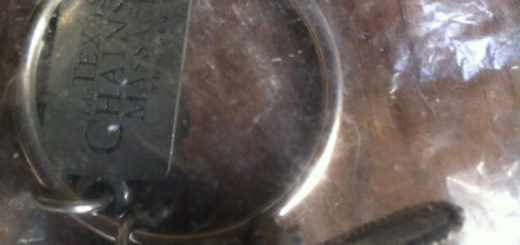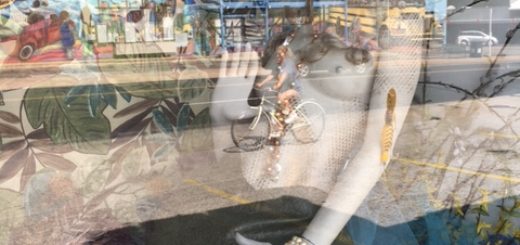Red Dog @Nashville Film Festival
Nashville Film Festival coverage via Jason Sparks, Our Man in Nashville
Among people who know and take seriously modern country music, the name Luke Dick will already be familiar; he’s a songwriter who has composed tunes for Deirks Bentley, Eric Church, Miranda Lambert, and Kacey Musgraves. What those same people probably don’t know is that Luke’s childhood gave him incredible country songwriter bonafides—he grew up in and around The Red Dog, which is (I’m assuming most of you won’t have cause to know this; I didn’t) Oklahoma City’s best-known strip club. His mother was a dancer there, and that sets up the premise of Luke’s directorial debut, Red Dog, in which he interviews his mother, her friends from the club, and various old boyfriends to get some clarity about why he grew up as he did.
Now, maybe, I should be honest here for a moment. The day I saw Red Dog, I was scheduled to see a total of five films, and I missed the first two. Not wanting to have fewer reviews to submit, and having just been thoroughly depressed by Only, I sought out an extra film to review. Red Dog, as fate would have it, started and ended at just the right times to fit in neatly between Only and my next scheduled film. Also, to be very honest, I saw that this was a documentary about a strip club and…let’s just say I assumed it would be less depressing than Only, for, um, reasons.
I was correct, in a way; there is nudity, most of it in comic animation rendered by co-director Casey Pierce (to illustrate the many anecdotes told by the ex-strippers), some of it in the form of Polaroids of the girls taken in the 70s and 80s. What’s actually non-depressing about the film, however, is the presence therein of Kim Kassen—Luke’s mother. He wasn’t sure how forthcoming Kim would be about her wild past; he needn’t have worried. In Act I of Kim Kassen’s life—recounted here by Kassen, her friends, and animation—she was a teenage girl, a single mother, and a drug addict in desperate need of a job. At about the same time she wore all those labels, Oklahoma City was a town in the throes of an oil boom. For whatever the reason—I suppose it’s to do with the machismo inherent to oil wildcatters, or some such—oil booms tend to mean good business for strip clubs. In OKC, the club to reap the whirlwind was Red Dog, and Kim, fake ID in hand, showed up at the right time, and stayed for several years.
Now, in Act III, Kim Kassen is a chain-smoking “broad” (in the positive connotations of that term) who curses like a sailor, laughs at her own stories, and tells said stories with an honest mixture of gallows humor and nostalgia. They’re stories about strippers and drugs, so they aren’t clean, but they are rollicking; one particularly memorable tale reveals that, for reasons to complex and filthy to go into here, Kim may have inadvertently invented the concept of “va-jazzling” 20 years ahead of its official introduction. (No, I’m not going to provide a link to anything. Use your own search engine. At home. When everyone else is asleep.) Her fellow former strippers, and their various boyfriends and husbands and ex-husbands, are equally blunt about their collective past, and they’re equally potent storytellers. A multi-person reminiscence about a girl from the club who is not in the film, nor could be due to unfortunate life-choices, is as hilarious and lurid as it is heartbreaking, and it’s a surprise to be moved by a story about someone who went by the name “Nasty Cathy.”
Luke Dick does not re-invent the documentary here; the techniques used are the ones we are all familiar with—talking heads, found footage, old photographs (ahem); the animated illustrations for the stories are novel, but they couldn’t become a universal element of documentary. What really carries this film, as is often the case with good docs, is the subjects themselves, being frank and real about their sordid pasts. In a Q&A afterward, Luke spoke about the time invested in shooting the film; the more footage he shot, the more accustomed Kassen and company grew to sharing about their lives, and, as such, the stories came more naturally and honestly. A good documentary gives its viewer a window into a world that viewer doesn’t know, and probably misreads—this doc tells us that a group of folks we might write off as “rough trade” and all the rest are just as human as anyone else, doing what they can do, surviving as they must. My motivations for seeing the film were partially—partially, I swear—lurid, but I left the theatre seeing ex-strippers as full, rich human beings. I say that not to celebrate my own (as the kids say) wokeness, but to celebrate Luke Dick’s successful effort at filmmaking.






















